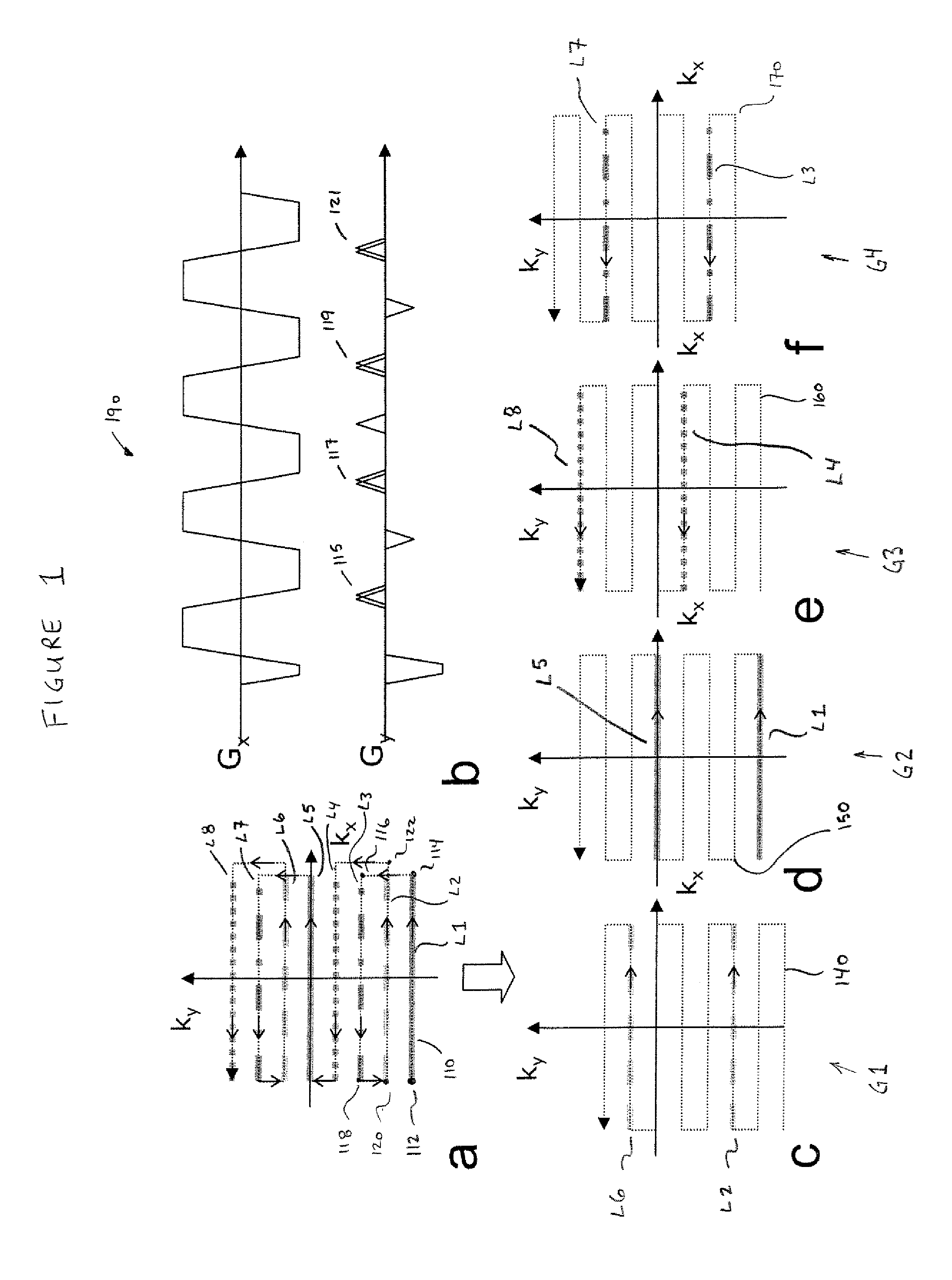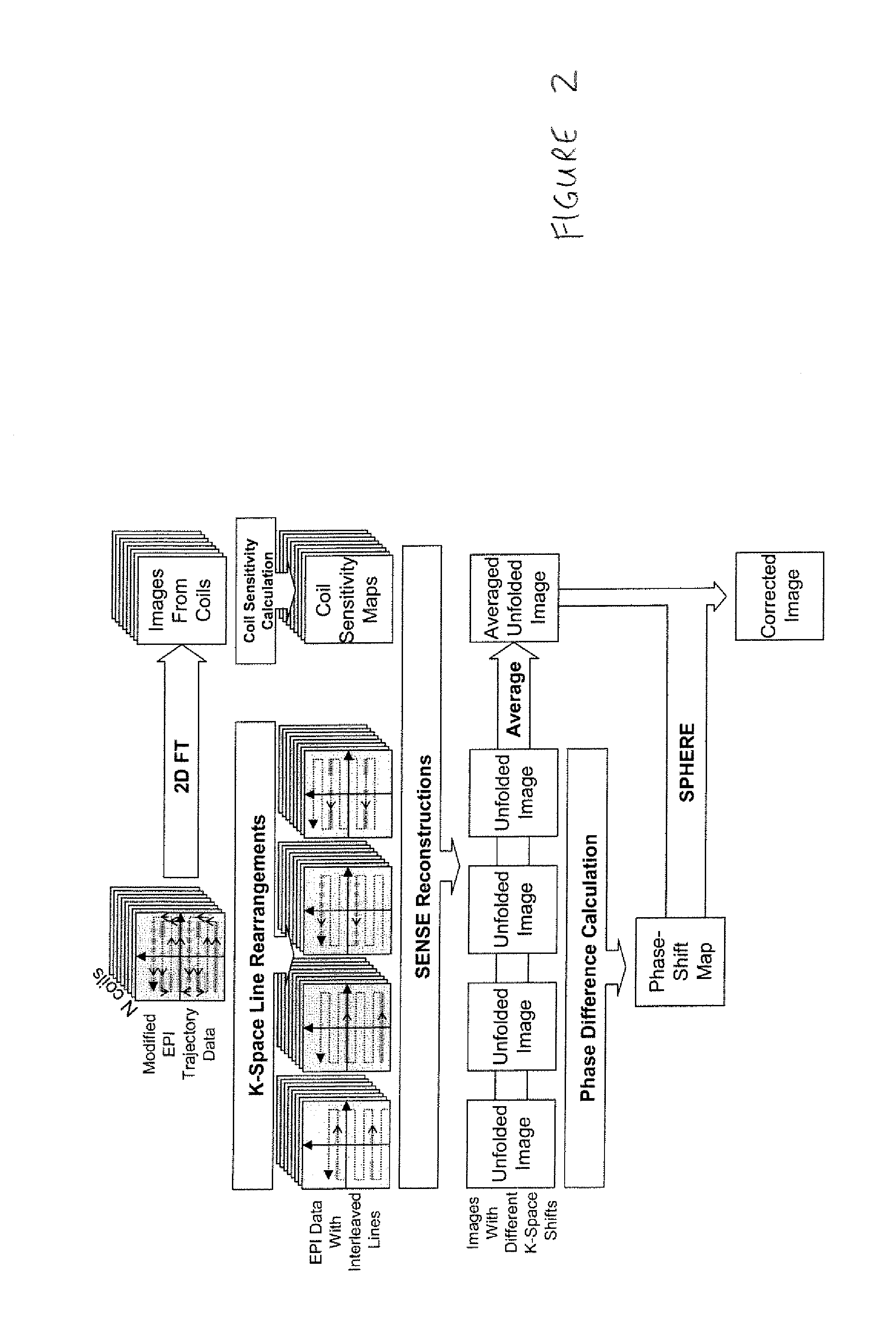Phase labeling using sensitivity encoding: data acquisition and image reconstruction for geometric distortion correction in epi
a phase labeling and phase labeling technology, applied in the field of magnetic resonance imaging, can solve the problems of geometric distortion, difficult to register severely distorted images to anatomical images, sensitive epi to magnetic field inhomogeneity, etc., to improve signal-to-noise ratio, reduce artifacts, and facilitate the effect of passing to the sphere calculation
- Summary
- Abstract
- Description
- Claims
- Application Information
AI Technical Summary
Benefits of technology
Problems solved by technology
Method used
Image
Examples
Embodiment Construction
[0035]The following detailed description of the invention refers to the accompanying drawings and to certain preferred embodiments, but the detailed description does not limit the invention. The scope of the invention is defined by the appended claims and equivalents as it will be apparent to those of skill in the art that various features, variations, and modifications can be included or excluded based upon the requirements of a particular use.
[0036]As illustrated in the discussion below, the present invention includes a system, method, and computer program product for providing geometric distortion correction in echo planar imaging (EPI) that generates corrected images without the shortcomings of previous techniques. A system, method, and computer program product in accordance with the present invention employs phase labeling using sensitivity encoding (PLUS), that utilizes the EPI measurement data themselves to correct geometric distortion, without acquiring separate scans for fi...
PUM
 Login to View More
Login to View More Abstract
Description
Claims
Application Information
 Login to View More
Login to View More - R&D
- Intellectual Property
- Life Sciences
- Materials
- Tech Scout
- Unparalleled Data Quality
- Higher Quality Content
- 60% Fewer Hallucinations
Browse by: Latest US Patents, China's latest patents, Technical Efficacy Thesaurus, Application Domain, Technology Topic, Popular Technical Reports.
© 2025 PatSnap. All rights reserved.Legal|Privacy policy|Modern Slavery Act Transparency Statement|Sitemap|About US| Contact US: help@patsnap.com



